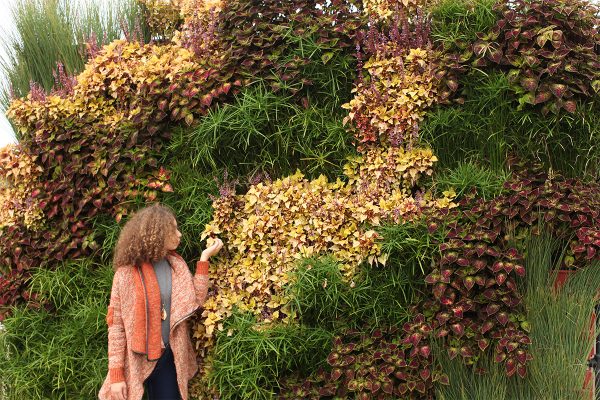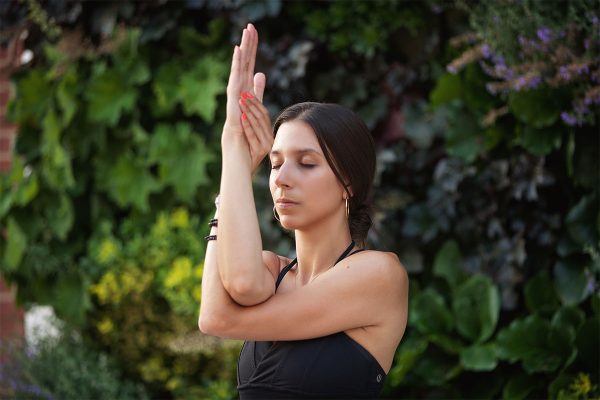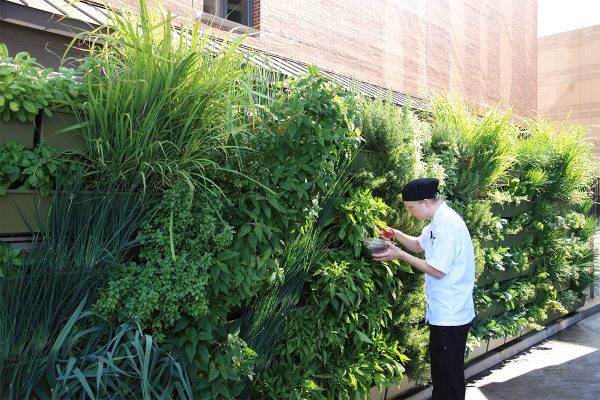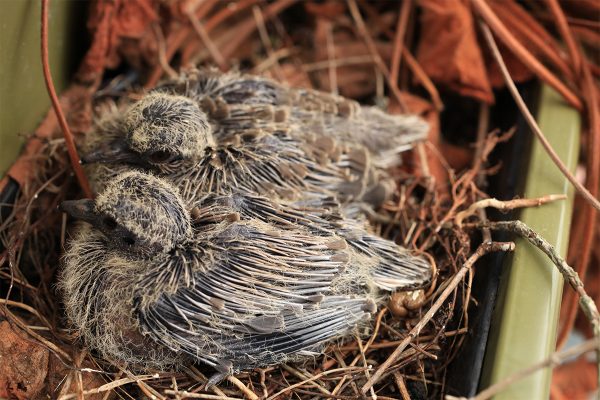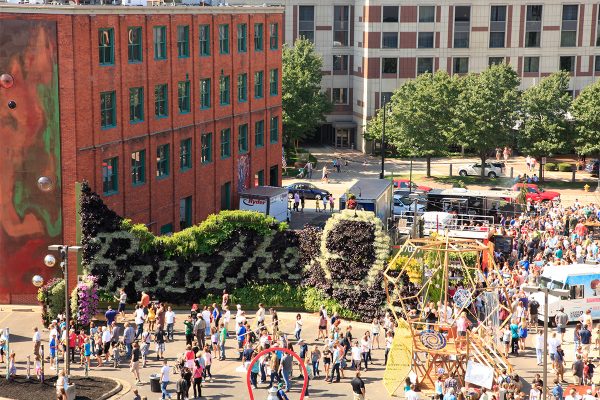Living Wall Benefits
Living walls offer a variety of benefits, many of which fulfill the human need to connect with nature. This is known as ‘biophilia,’ a growing study that emphasizes the physiological and resultant economic benefits that come from restoring natural connections in our built environment.
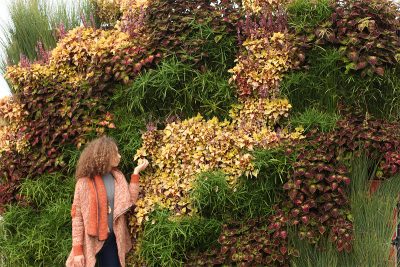
Marketing
Living walls are very effective marketing tools. People tend to stay longer and feel better about their time spent in the presence of plants.
Attract Customers
Shoppers stay in stores longer and visit more frequently when plants are heavily prevalent inside and outside retail settings.
Stronger Sales
Consumers purchase more merchandise and are willing to pay higher prices for goods when surrounded by nature.
Higher Rents
Living walls can be used to improve the view in leased space, translating into more dollars guests or tenants are willing to spend.
Demonstrate Stewardship
A living wall tells customers, residents, employees or neighbors that you care about your community, your health, and the ecosystem.
Living Signage
Local ordinances prohibiting signage may approve a wall of plants featuring organization’s colors or patterned in the shape of a corporate logo.
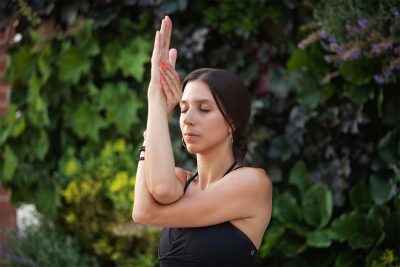
Health and Well-Being
Research shows evidence of physical and mental health benefits resulting from interaction with plants. Living walls offer space-saving and high impact methods of bringing nature to any environment, thus allowing residents, employees, customers, and patients to benefit from the healing power of plants.
Recover Faster
Patients who physically interact with plants use less medication and experience significantly reduced recovery times after medical procedures.
Enhance Experience
Using plants and planted walls in healthcare enhances the experience of patients, visitors and staff, who report greater satisfaction and positive feelings in the presence of nature.
Wheelchair Accessible
Mobile healing gardens also are possible with LiveScreen, which can be easily moved to allow greater patient access to therapeutic gardening exercises.
Ease Anxiety
Researchers have found lowered cortisol levels and reduced reported anxiety levels correlating with access and interaction with plants.
Positive Emotions
Colors can have an effect on our emotions. Green is linked to safety, so green foliage typical of indoor plantings create a comforting environment.
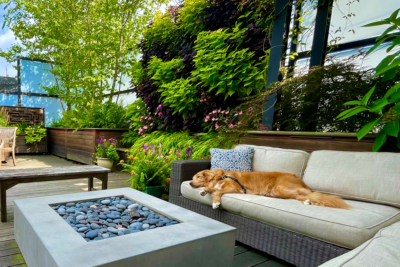
Human Habitat
It’s not just birds butterflies and bunny rabbits that need habitat… we do too. A well designed LiveWall can be pivotal in defining your patio, garden or rooftop refuge.
Connectedness to Nature
When we’re surrounded by nature, it helps us to stay grounded, balanced, restful and clear headed. It helps us to feel safe and secure.
Civility
Nature makes us better people. It cares nothing about political affiliation, ethnicity or social standing. It teaches us that these things don’t matter. Being surrounded by nature helps us to be better people.
Wonder and Gratitude
Nature continually presents us with opportunities for wonderment, learning and gratitude. It softens our hearts, fosters sharing and helps us to be grateful.

Performance and Productivity
Our innate need to connect with nature is known as biophilia. This is the driving force behind our mood, focus, and stronger immune system when exposed to natural environments. Living walls are a great way to trigger the biophilic response to improve performance and productivity.
Better Attendance
Workplaces which incorporate biophilic design elements such as access to nature have reduced absenteeism, fewer complaints, and improved staff retention.
Reduce Fatigue
Providing access to nature in the workplace can reduce eyestrain, relieve mental fatigue, and improve focus on tasks.
Increase Output
Integrating plants into workplaces yields productivity gains and reduced psychological stress.
Enhance Performance
Student exposure to nature has been correlated with higher academic performance in Math and English.
Improve Focus
Studies have also demonstrated that exposure to nature eases symptoms of Attention-Deficit/Hyperactivity Disorder (ADHD).
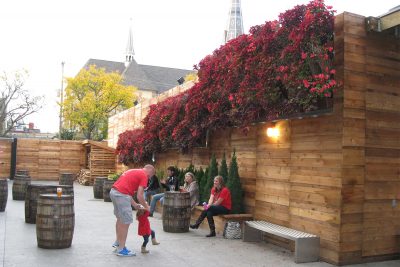
Improve Space
Living walls can be used to mask the sight, sound, and smell of equipment and utilities to convert undesirable space to gathering places.
Hide Equipment
Green walls are an attractive, organic alternative to traditional architectural siding treatments. Enclosing equipment and utilities with plant walls converts eyesores to beautiful points of interest, transforming hostile spaces to be more inviting.
Reduce Noise
Vertical gardens act as acoustic insulators; dampening and reducing noise. This is a great benefit to occupants affected by traffic, trains, industry, airports or mechanical equipment. In rooms with hard-floors and ceilings, living walls increase sound absorption. A reduction in sound reflection allows for a more comfortable noise level. To optimize noise reduction, increase the surface area of the living wall through billowing or upright large-leaved plants.
Improve Odors
When used to surround recycling and waste dumpsters, or areas housing equipment for wastewater treatment or food processing, living walls can help improve both the appearance and the smell of areas adjacent to these facilities. Studies on vegetation for controlling farm odors found that leaves and other plant surfaces remove some of the dust, gas, and microbial components of airstreams.
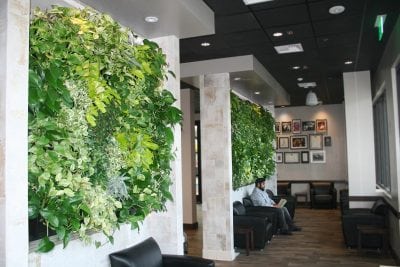
Air Quality
Green walls contribute toward cleaner, more oxygenated air.
Natural Humidity
Through the natural process of evapotranspiration, living wall plants also release water vapor that cools the air in summer and restores healthful moisture to heated spaces in winter.
Reduced Particulates
Particulate reduction improves resistance to cold, flu, and itchiness thanks to hydrating the membranes and tissues of the nose, mouth, ears, and eyes, which also leads to a reduction of allergies.
Increased Oxygen
Plants naturally infuse the air with oxygen and reduce carbon dioxide levels for overall improved quality. Plant leaves can remove traces of toxic chemicals such as carbon monoxide and formaldehyde.
Reduced Carbon
Not only do plants take in more CO2 than they release, plants have a natural cooling effect. This results in lowered demand for air-conditioning and the resultant carbon emissions.
Reduced Heat
Less air conditioning also means less hot air is emitted into the atmosphere. Also, because plants absorb sunlight for photosynthesis, less energy is reflected and absorbed as heat. The greening of building surfaces helps to reduce the urban heat island effect.
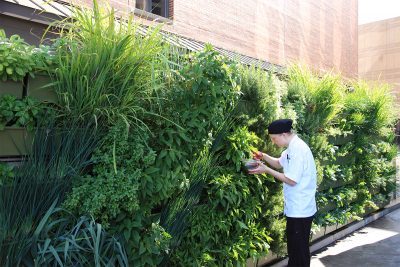
Food Production
Vertical gardens are a solution in the rising urban movement as horizontal space can be difficult to come by in populated areas. Even in rural and suburban areas, restaurateurs, senior housing, healthcare providers, and homeowners are turning to “vertical farming” for affordable, low-maintenance food production.
Healthy Food
When used to grow herbs and vegetables, produce from a living wall provides supplemental food that is healthy for the body and the environment.
Dietary Improvements
Children—and adults—who are involved in the process of growing their own food are more likely to have healthier diets.
Excellent Yields
An exterior living wall planted with edibles and receiving direct sunlight can produce abundant yields, approximately 1 ounce per square foot per week of greens and herbs.
Minimal Bending
Chefs, patients and residents alike do not need to bend or strain their back to enjoy these plant walls.
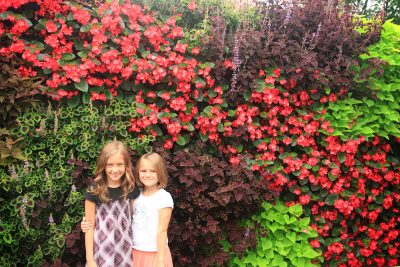
Community
Green walls contribute to healthy communities, and are linked to a number of benefits, including reduced crime rates and increased civic participation.
Increased Peace
Increased urban greenery where ground-level landscaping is in short supply. Green communities see less violence, aggression, vandalism, and littering. Landscaped communities encourage residents to spend more time outside, contributing to a greater degree of crime deterrence. Safer communities are more attractive to residents, encouraging population stability.
Community Bonds
Similarly, green communities correlate with increased sense of pride and place, levels of trust, and civic participation. Residents in green communities spend more time outdoors and bonding with neighbors. Increased positive public sentiment can support other goals, such as maintaining population levels that bolster a community’s economic sustainability and stability.
Balanced Solutions
Landscaped communities are more attractive to tourists and shoppers. Community planners can fulfill the desire for greenness through green walls. The plants in the living wall beautify neighborhoods without taking up ground space. Also, surface runoff can be collected, treated and used for irrigation.
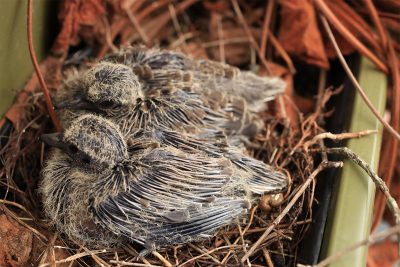
Conservation
Vertical gardens help contribute to efforts of conservationists.
Restore Habitat
Plants and soil help recreate habitat for butterflies, pollinators, and songbirds.
We have observed nests with eggs or chicks in the springtime, and even frogs taking a break in our living wall planters!
Protect Envelope
The LiveWall system is mounted on vertical tracks, which allow for air movement and moisture escape from the building envelope. Plants absorb sunlight and release water during transpiration, which cools the building surface and reduces the amount of expansion and contraction of the envelope due to heat fluctuations and eliminates direct UV exposure.
Save Energy
When used outdoors, the evapotranspirative effects of living wall plants can reduce HVAC costs during hot weather. Maximize the benefits of this cooling effect by covering the sides of the building that receive the most sunlight (in Northern Hemisphere, south- and west-facing) with broad-leaved plants.
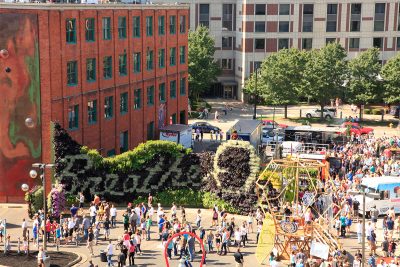
Artistic Expression
Living walls offer a unique opportunity for sustainable artistry. The LiveWall system acts as a canvas, and the plants as paint.
Paint With Plants
Artistic expression comes to life with LiveWall living gardens, where there is no limit to the creative possibilities. Transform your building wall into a living canvas with a broad palette of plants.
Living Art
Living walls can serve as a means of expression, creating a unique space for people to express themselves in various ways.
Dynamic Works
By its nature, living art moves and adapts to the environment it occupies. Green walls react to available sunlight and grow to fill in space. This creates a dynamic work of art that is always evolving. This ever changing nature creates a unique artistic experience.
Illustrative Art: Featured Projects
The plants in these living walls are arranged to illustrate an object or animal, or to represent an idea, brand, or logo.

